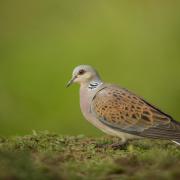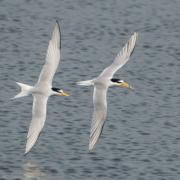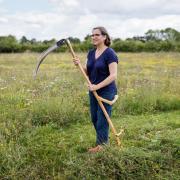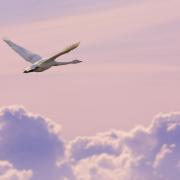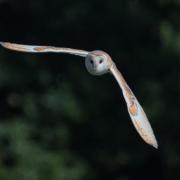Matt Gaw goes looking for Waveney, watery home to rare spiders

The water is welling up under my boots. With each footstep it oozes out from great sponges of sphagnum moss and washes over my toecaps, sometimes crystal clear, sometimes coppery, sometimes peaty black.
I tramp on, squelching through a landscape of reed and sedge, towards a line of oak that marks the eastern edge of Redgrave and Lopham Fen.
The path is bordered by grazing ditches and turf ponds, home for the rare fen raft spider – first discovered here in 1956 and now the subject of a recolonisation project.
I peer into some of the pools. I know, despite the lingering unseasonal warmth, the spiders will be hibernating. But the chance of seeing a palm-sized creature standing on the water as it waits for its prey, long legs pricking and puckering the surface, is just too much of a temptation.
The water is spider-free and almost perfectly still, moving only with the harder gusts of wind and the reflections of clouds. The world feels somehow smaller, battened down for winter.

Moving off eastwards again past a waving stand of saw sedge, the ground sucks and gasps as I pick up pace. Today, unusually for me, this is a walk of purpose. I’m not here to track spiders, but a river. Or more accurately, the source of a river – what Roger Deakin described after visiting this very site as “a tear duct of the earth”.
I check my map. This is it. The start of the thin blue line. The ditch in front of me is the source of the Waveney, while on the other side of the road is the upper reaches of the Little Ouse. Those broad-backed rivers that run east towards Diss, Beccles and the shuck-stalked banks of Bungay and west through Rushford, Thetford and Brandon start here.
Of course, the shimmying spirit of these waterways is not contained within the steep sides of this manmade channel. Yes, this may be their uppermost reaches, but river sources, like all truly wild things, are hard to track and anticipate.
There is a sense in which this whole reserve is the river source, with springs and seepages welling up from chalk aquifer through deposits of peat to come together like raindrops chasing down a window pane.
Clinging to a branch, I dangle a booted toe in the water. It seems strange to think of what this water will become, of how just a few miles downstream I have – again following Deakin – swum in its flows, enjoying a frog’s eye view of the world, a waterscape of soft browns and algal greens, of muddy feet and chattering teeth.

Clambering back from my precarious position, I can well understand why explorers dedicated their lives to chasing river sources. The fascination isn’t just about becoming, about how this ooze in the ground, this wet patch with aspirations becomes a strong and defined course – it is also about the past.
The source of the Waveney and The Little Ouse is both young and old, the birth of a river and a process that has continued ever since the ice rolled back all those thousands of years ago. Nan Shepherd, writing about the Wells of Dee, perhaps put it best.
“Water . . . one of the four elemental mysteries, can here be seen at its origins. Like all profound mysteries, it is so simple that it frightens me. It wells from the rock, and flows away. For unnumbered years it has welled from the rock, and flowed away. It does nothing, absolutely nothing, but be itself.”
I walk back the way I came, downstream, through a squelch that becomes a river.
Matt Gaw is editor of the Suffolk Wildlife Trust’s magazine, Suffolk Wildlife


















